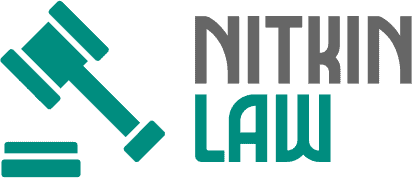
Car accidents often create more than physical injuries; they bring financial strain, emotional distress, and legal challenges. In Conyers, Georgia, victims face a complex process when pursuing compensation. Each claim involves multiple legal elements that determine whether a case is strong enough to proceed and how much compensation a person may be entitled to receive. Understanding how these legal factors work can help victims prepare before speaking to a professional.
A Conyers car accident lawyer can help victims understand Georgia’s laws and build a compelling case to protect their rights. Legal claims depend on evidence, procedural rules, and liability principles that go beyond simply proving someone caused a collision. The attorney’s evaluation ensures that every part of the claim follows local statutes and maximizes the chances of fair recovery.
1. Establishing Legal Liability through Negligence Principles
Every car accident case begins with determining who was at fault for the collision. Lawyers examine the driver’s conduct and apply Georgia’s negligence laws to determine who is responsible. To prove negligence, four elements must be met: duty, breach, causation, and damages. The driver must have owed a duty of care to others on the road, violated that duty through reckless or careless behavior, caused the accident directly, and produced measurable harm as a result.
An attorney gathers traffic camera footage, police reports, and witness statements to confirm these elements. They also analyze vehicle damage patterns and skid marks, which often reveal the direction, speed, and point of impact of the vehicles involved. Without this step, an insurance company might dispute who was at fault or argue that the injured party contributed to the crash.
2. Applying Georgia’s Comparative Fault Rules
Georgia follows a modified comparative negligence system. This rule allows injured drivers to recover compensation even if they share some responsibility, provided their percentage of fault remains below 50%. The recovery amount decreases in proportion to the person’s share of liability.
A Conyers car accident lawyer can help calculate this percentage accurately and challenge any attempt by insurance companies to inflate the client’s share of fault. Attorneys often bring in accident reconstruction experts or traffic engineers to clarify each party’s contribution to the event.
3. Evaluating Evidence for Economic and Non-Economic Damages
Compensation includes two categories of damages: economic and non-economic. Financial losses include medical bills, lost income, property repair costs, and future rehabilitation expenses. Non-economic damages cover pain, emotional trauma, reduced quality of life, and similar impacts that do not have a clear price tag.
A skilled lawyer reviews medical records, employment documents, and treatment plans to ensure that all losses are documented. They might consult with healthcare specialists to forecast future costs, especially for long-term injuries such as spinal damage or traumatic brain injuries. Detailed documentation of emotional suffering also strengthens non-economic claims, thereby increasing the likelihood of a fair settlement.
4. Confirming Compliance with Georgia’s Statute of Limitations
Georgia law sets a strict time limit for filing personal injury claims after a vehicle accident. Victims usually have two years from the date of the incident to initiate legal action. Failing to file within this period can result in a permanent bar to recovery.
Attorneys closely monitor these deadlines and any exceptions that could extend or shorten the timeframe. For instance, if the collision involved a government vehicle, special notice requirements may apply. Keeping all records organized and ensuring that filings meet procedural standards prevents costly mistakes that could weaken a claim.
5. Identifying Insurance Coverage and Policy Limits
Insurance coverage plays a significant role in determining the amount of available compensation. Lawyers examine the at-fault driver’s policy limits, coverage types, and exclusions. They also check whether the victim has uninsured or underinsured motorist coverage that could supplement recovery if the other driver’s insurance is inadequate.
This evaluation requires attention to detail. Attorneys review declarations pages, endorsements, and correspondence between insurers to ensure compliance with applicable laws and regulations. They often uncover additional coverage, such as umbrella policies or third-party liability coverage from employers if a commercial vehicle was involved. Knowing all available policies ensures that no potential compensation source goes unused.
6. Assessing Legal Evidence of Causation and Injury Link
Even when liability seems clear, insurance adjusters often challenge the connection between the accident and the injuries. Lawyers must prove that the collision directly caused the medical condition being claimed. To do this, they review diagnostic imaging, doctors’ notes, and accident timelines to show a consistent medical narrative.
If a pre-existing condition exists, the attorney distinguishes between prior symptoms and new injuries. Expert medical testimony often helps clarify how the collision exacerbated or worsened a pre-existing condition. This careful documentation prevents insurers from arguing that the injuries were unrelated or exaggerated.
Legal Insight: Strengthening a Car Accident Claim in Conyers
Legal claims after a crash depend on evidence, timing, and knowledge of Georgia’s civil laws. Each factor interacts with the others, shaping how a case develops and what compensation may be available. Victims who understand these six elements can make more informed choices when discussing their options with counsel.
Professional legal guidance helps victims stay organized, comply with deadlines, and present persuasive documentation. Understanding these components early allows victims to respond confidently when insurers request statements or offer settlements. Recovering after a crash requires more than medical care; it demands strategic preparation. Evaluating liability, understanding comparative fault, tracking damages, meeting time limits, confirming insurance coverage, and proving causation form the foundation of every strong claim. These steps ensure that justice aligns with evidence, not assumptions, and that every injured driver in Conyers has a fair chance to rebuild after an accident.

